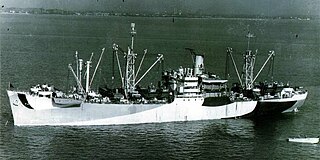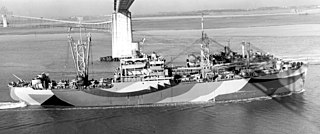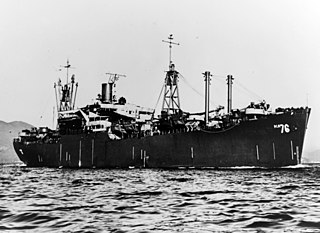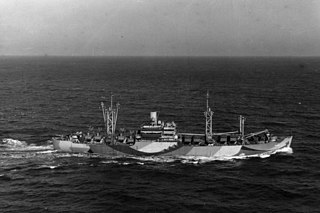
USS Lenoir (AKA-74) was a Tolland-class attack cargo ship in service with the United States Navy from 1944 to 1946. She was sold into commercial service and was scrapped in 1971.

USS New Hanover (AKA-73) was a Tolland-class attack cargo ship in service with the United States Navy from 1944 to 1946. She was sold into commercial service and was scrapped in 1970.

USS Stokes (AKA-68) was a Tolland-class attack cargo ship in service with the United States Navy from 1944 to 1946. She was sold into commercial service and scrapped in 1971.

USS Suffolk (AKA-69) was a Tolland-class attack cargo ship in service with the United States Navy from 1944 to 1946. She was sold into commercial service and was scrapped in 1971.

USS Tate (AKA-70) was a Tolland-class attack cargo ship in service with the United States Navy from 1944 to 1946. She was sold into commercial service and was scrapped in 1970.

USS Torrance (AKA-76) was a Tolland-class attack cargo ship in service with the United States Navy from 1944 to 1946. She was sold into commercial service and was scrapped in 1972.

USS Towner (AKA-77) was a Tolland-class attack cargo ship in service with the United States Navy from 1944 to 1946. She was sold into commercial service and was scuttled in 1967.

USS Trego (AKA-78) was a Tolland-class attack cargo ship in service with the United States Navy from 1944 to 1946. She was sold into commercial service and was scrapped in 1969.

USS Trousdale (AKA-79) was a Tolland-class attack cargo ship in service with the United States Navy from 1944 to 1946. She was sold into commercial service and was scrapped in 1968.

USS Tyrrell (AKA-80) was a Tolland-class attack cargo ship in service with the United States Navy from 1944 to 1946. She was sold into commercial service and was scrapped in 1967.

USS Venango (AKA-82) was a Tolland-class attack cargo ship in service with the United States Navy from 1945 to 1946. She was sold into commercial service and was scrapped in 1971.

USS Waukesha (AKA-84) was a Tolland-class attack cargo ship in service with the United States Navy from 1945 to 1946. She was sold into commercial service and was scrapped in 1970.

USS Wheatland (AKA-85) was a Tolland-class attack cargo ship in service with the United States Navy from 1945 to 1946. She was sold into commercial service and was scrapped in 1973.

USS Sheliak (AKA-62) was an Andromeda-class attack cargo ship in service with the United States Navy from 1944 to 1946. In 1948, she was sold into commercial service and was scrapped in 1969.

USS Neshanic (AO-71) is a former T3 Kennebec-class oiler constructed for the United States Navy during World War II. She was the only U.S. Navy ship named for the Neshanic River in New Jersey.

USS Severn (AO-61) was a Cimarron-class fleet oiler. She was constructed for the U.S. Navy during World War II and her assignment was to provide liquids, such as fuel or water, to ships in the forward battle areas. She survived this dangerous task and returned home post-war with two battle stars to her credit.

USS Lamar (APA-47) was a Bayfield-class attack transport in service with the United States Navy from 1943 to 1946. She was sold into commercial service in 1948 and was scrapped in 1971.

USS General Omar Bundy (AP-152) was a General G. O. Squier-class transport ship for the U.S. Navy in World War II.

USS Adair (APA-91) was a Windsor-class attack transport in service with the United States Navy from 1944 to 1946. She was sold to commercial service in 1947 and was finally scrapped in 1970.

USS George F. Elliott (AP-105) was a cargo liner built for the Mississippi Shipping Company as SS Delbrasil for operation between New Orleans and the east coast of South America in 1939 by its operator, Delta Line. The ship entered that service and operated until taken over by the War Shipping Administration (WSA) on 28 April 1942 for operation by Delta Line acting as WSA's agent. On 25 August 1943 WSA allocated the ship to the Navy for conversion to a troop transport commissioned and operated by the Navy for the duration of the war. Ownership of the ship was transferred from Mississippi Shipping to WSA on 4 February 1944 while under Navy operation and was retained until sale to American South African Lines on 22 December 1948. The ship was renamed African Endeavor until returned as a trade in to the Maritime Commission on 22 September 1960 for layup in the James River reserve fleet and later sold to Boston Metals for scrapping.




















